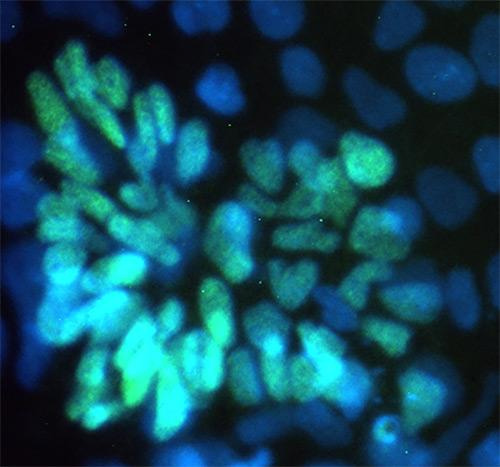I just read this at dr Amagai's university web page:
Characterization of human hair follicles
We identified the cell surface marker of stem cell-enriched human bulge cells and, using this marker, successfully isolated and cultured living human bulge cells (Ohyama et al., J Clin Invest, 2006). We also established the culture conditions for sustained expression of genes related to trichogenic activity in human dermal papilla cells (patent filed). In-vivo assays and 3D cultures for hair follicle reconstitution have been developed. These cultivated cell components and assays will facilitate experiments for the regeneration of hair follicles.
Development of treatment for scarring alopecia using bioengineered human hair follicles
The goal of the present project is to bioengineer human hair follicles with the maintenance of their full function and structure, for potential use in the treatment of permanent hair loss. We shall attempt to regenerate human hair follicles using a cell mixture of hair follicle bulge stem cells and dermal papilla cells with optimized hair-inductive capacity. The hair reorganization potency of the cell mixture will be assessed by hair reconstitution assays in vivo or using a 3-D culture system.
Look at figure 2: Fig.2 Regeneration of human hair follicle with cultured human dermal papilla cells inmice
It shows a lot of regrowth.
Characterization of human hair follicles
We identified the cell surface marker of stem cell-enriched human bulge cells and, using this marker, successfully isolated and cultured living human bulge cells (Ohyama et al., J Clin Invest, 2006). We also established the culture conditions for sustained expression of genes related to trichogenic activity in human dermal papilla cells (patent filed). In-vivo assays and 3D cultures for hair follicle reconstitution have been developed. These cultivated cell components and assays will facilitate experiments for the regeneration of hair follicles.
Development of treatment for scarring alopecia using bioengineered human hair follicles
The goal of the present project is to bioengineer human hair follicles with the maintenance of their full function and structure, for potential use in the treatment of permanent hair loss. We shall attempt to regenerate human hair follicles using a cell mixture of hair follicle bulge stem cells and dermal papilla cells with optimized hair-inductive capacity. The hair reorganization potency of the cell mixture will be assessed by hair reconstitution assays in vivo or using a 3-D culture system.
Look at figure 2: Fig.2 Regeneration of human hair follicle with cultured human dermal papilla cells inmice
It shows a lot of regrowth.





Comment